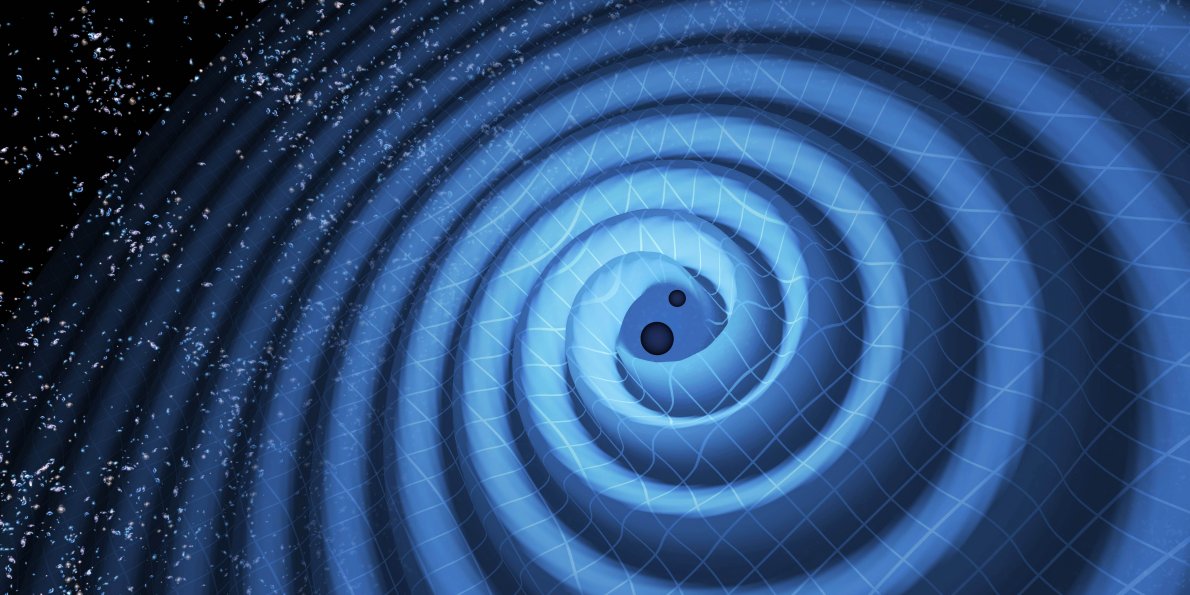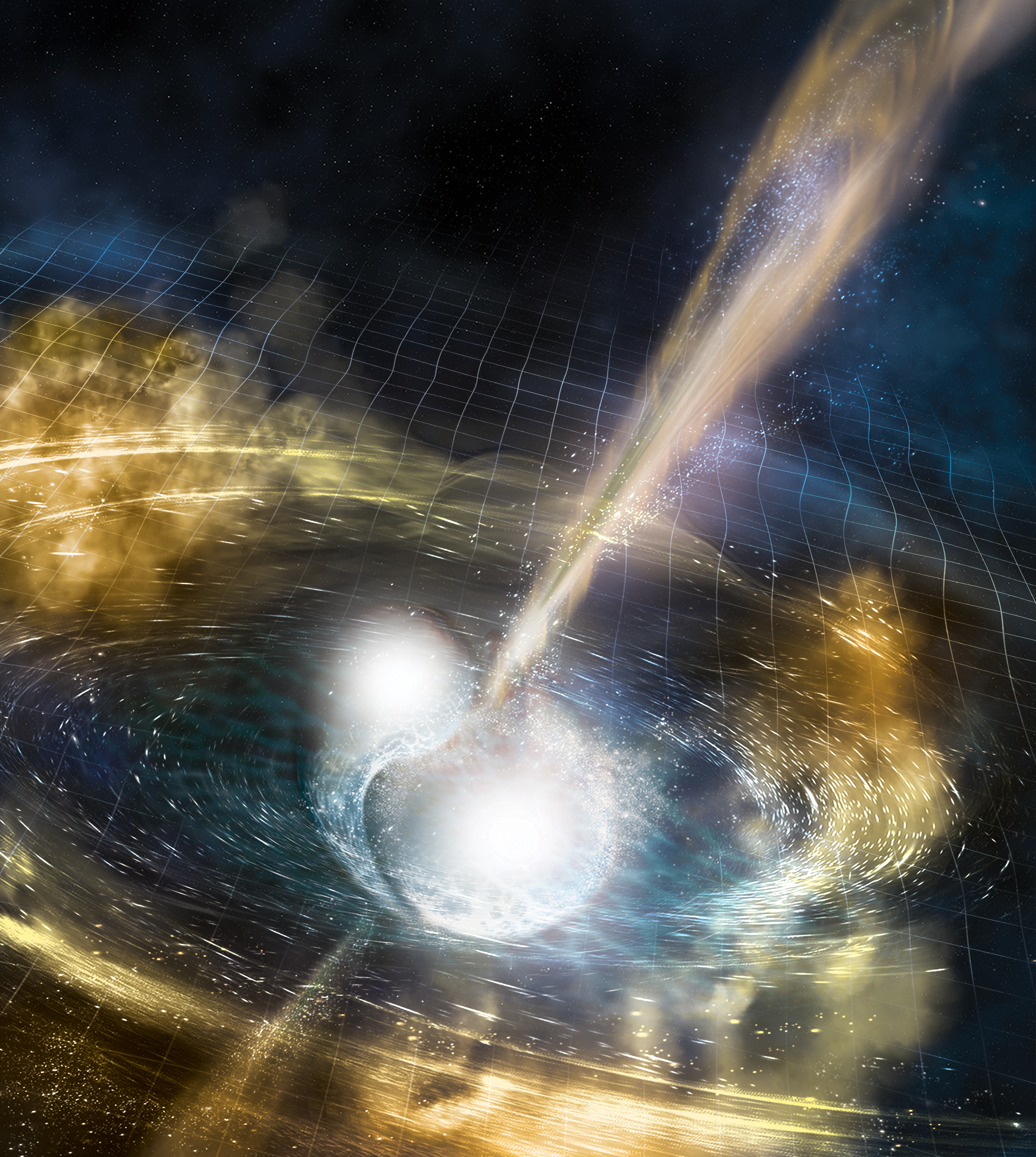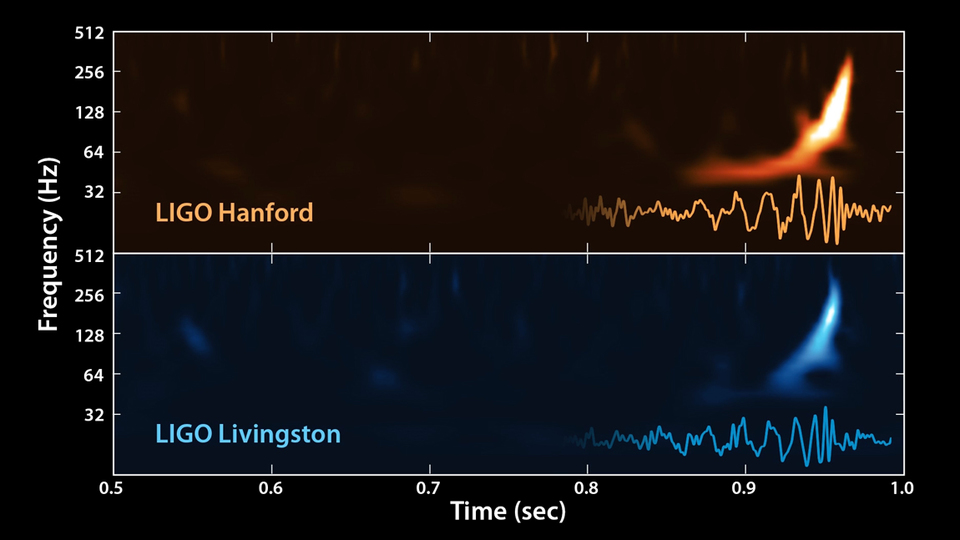Gravitational Waves - Nobel Prize 2017 in physics
The prize was awarded to R. Weiss, B. Barish and K. Thorne for their contributions to the LIGO detector, which directly detected gravitational waves for the first time in 2015. The group of Philippe Jetzer of UZH is involved in research with gravitational waves.

This year's Nobel Prize in physics was awarded to Rainer Weiss, Barry Barish and Kip Thorne for their pioneering contribution to the LIGO detector, which directly detected gravitational waves for the first time in 2015. Predicted by Einstein's General Relativity, gravitational waves are produced through accelerated masses like e.g. two black holes orbiting around each other. Their amplitude is however so tiny that it requires advanced detection and analysis techniques to overcome the ambiant noise and observe a proper signal. Thanks to the commitment and pioneering work of the Nobel laureates that started in the mid 1970s, the first successful detection of a signal produced by the collision of two black holes occurred back in September 2015. Since then, several additional events could be observed. UZH researcher Maria Haney (Postdoc in the group of Prof. Philippe Jetzer) is a member of the LIGO Collaboration and co-author of the paper describing the first observation of gravitational waves.
-

- Illustration of the merger of two black holes, with the production of gravitational waves (Picture Credit: LIGO/T. Pyle)
The group of Philippe Jetzer is highly involved in this active field and is part of the LIGO collaboration, as well as the LISA Pathfinder and LISA Science team. Its members are specialized in theoretical aspects and data analysis of the LIGO detector and the future ESA mission LISA, a gravitational wave detector in space.
See also the article in UZH News.
First gravitational wave signal produced by the merger of two black holes and detected by LIGO on the 14th September 2015 (Picture Credit: LIGO)
On October 16, 2017, the LIGO Scientific Collaboration, Virgo Collaboration, and its partners announced the first observation of gravitational-waves from a pair of inspiraling neutron stars.
http://www.ligo.org/detections/GW170817.php
-

- Cataclysmic Collision. Artist’s illustration of two merging neutron stars. The rippling space-time grid represents gravitational waves that travel out from the collision, while the narrow beams show the bursts of gamma rays that are shot out just seconds after the gravitational waves. Swirling clouds of material ejected from the merging stars are also depicted. The clouds glow with visible and other wavelengths of light. [Credit: NSF/LIGO/Sonoma State University/A. Simonnet]
